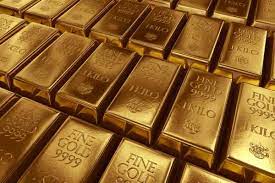Amid Mixed Signals, Can Gold Continue To Break Out?

Linh Tran
Gold experienced a corrective session yesterday as profit-taking pressure increased following its previous rebound. However, buying interest returned toward the end of the session, helping the precious metal recover most of its losses. This indicates that investor sentiment still leans toward holding gold as a safe-haven asset. The tug-of-war in price action reflects the market’s cautious stance amid a landscape filled with both economic and geopolitical uncertainties.
Recent U.S. economic data continues to play a central role in shaping monetary policy expectations—an important driver for gold prices. Specifically, the JOLTS report for April showed 7.391 million job openings, exceeding both forecasts and the previous reading of 7.200 million. This suggests that the U.S. labor market remains relatively robust, providing the Federal Reserve (Fed) with grounds to maintain high interest rates for an extended period.
At the same time, the Core PCE Price Index—the Fed’s preferred measure of inflation—remained anchored at 2.5% year-over-year, still above the 2% target. This reinforces the Fed’s cautious stance. In such an environment, gold may struggle to break out strongly in the short term as the opportunity cost of holding a non-yielding asset remains elevated.
However, trade-related risks appear to be tilting in favor of gold in the medium term. One of the most notable developments is the potential re-escalation of the U.S.-China trade war. President Donald Trump’s announcement of a doubling in import tariffs on steel and aluminum, coupled with news of an upcoming phone call with Chinese President Xi Jinping, signals rising trade tensions. Should negotiations fail, the threat of further retaliatory measures could act as a catalyst for increased demand for safe-haven assets—chief among them, gold.
At the same time, the Russia-Ukraine conflict has entered a new phase. Ukraine recently launched a large-scale drone offensive against strategic Russian airbases under the operation named “Operation Spiderweb.” With over 100 unmanned aerial vehicles launched from inside Russian territory targeting strategic bombers, the campaign inflicted significant damage and notably raised the risk of broader, uncontrolled escalation. Heightened geopolitical tensions between major powers have historically been a powerful driver of safe-haven demand, and gold is typically the first asset to benefit.
Overall, fundamental factors such as geopolitical risk, the potential revival of a global trade war, and expectations of monetary easing in the second half of the year all support a medium-term recovery outlook for gold.
In the near term, however, the market’s focus will shift to the upcoming Nonfarm Payrolls (NFP) report due later this week. This dataset will be pivotal in shaping expectations for the June FOMC meeting. If the NFP number significantly exceeds expectations, continued pressure from high interest rates may temporarily weigh on gold prices. Conversely, if the data shows clear signs of labor market weakness, the case for a rate cut later this year will strengthen, potentially triggering a renewed rally in gold.
Tran is Market Analyst at XS.com





